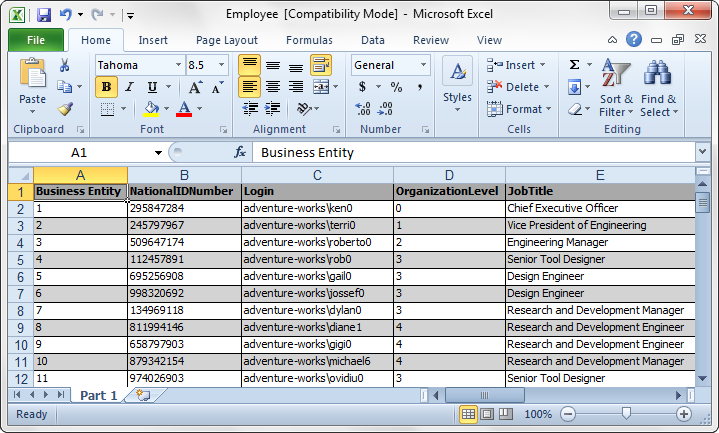3 Simple Steps to Export PNC Data to Excel

When it comes to managing financial data, having accurate and easily accessible information is crucial. Exporting data from a system like PNC (Preservation Notice and Control) to Excel can streamline your financial reporting process, enhance data analysis, and improve decision-making. Here’s a step-by-step guide on how you can export your PNC data to Excel effortlessly:
Understanding PNC Data Export

PNC offers a data export feature, allowing users to transfer information directly into a spreadsheet format for easier handling. Exporting data to Excel means you can leverage Excel’s powerful tools like pivot tables, charts, and advanced analysis functions.
Step 1: Prepare Your Data

Before initiating the export, ensure that:
- Your data in PNC is up to date – Sync any latest changes to avoid missing or outdated entries.
- Data is organized – PNC allows sorting, filtering, and categorizing of data. Make sure your data is arranged in a way that will be useful once exported.
🌟 Note: If your data contains sensitive information, consider using anonymous or masked data during the export process to maintain security.
Step 2: Execute the Export

To export your data:
- Log in to your PNC system with appropriate administrative rights.
- Navigate to the export section:
- This could be labeled as ‘Export,’ ‘Reports,’ or ‘Data Export.’
- Choose the specific report or data set you wish to export.
- Select Excel as the file format. Here’s what you should do:
- Click on the export button.
- Choose Microsoft Excel or .xlsx from the format options.
- Optionally, you can define the scope of data, like a date range, specific filters, or account details.
- Trigger the export by confirming your choices and initiate the download.
⚠️ Note: Large datasets might take a few minutes to process. Ensure your internet connection is stable to prevent export interruptions.
Step 3: Manipulate Data in Excel

Once the data is exported to Excel:
- Check for accuracy: Ensure that all data has been correctly transferred and no records are missing.
- Utilize Excel’s functions:
- Pivot Tables: Summarize and analyze data for insights.
- Conditional Formatting: Highlight key figures or trends.
- Filters and Sorting: Refine your data to focus on specific aspects.
- Create visual representations:
Chart Type Use Case Column Chart Comparing multiple categories or time periods. Line Chart Displaying trends over time. Pie Chart Showing proportions of a whole. 
🛠️ Note: Remember to save your workbook regularly, especially if you are working with large or complex datasets.
By following these three simple steps, you can efficiently export your PNC data to Excel, thereby opening up a wealth of possibilities for data analysis and presentation. This practice not only simplifies your workflow but also ensures that your financial data is readily available for any level of scrutiny or decision-making.
In summary, the benefits of exporting your PNC data to Excel include:
- Efficiency: Quick and organized data transfer to a widely used tool.
- Enhanced Analysis: Excel’s robust features allow for detailed financial analysis.
- Visibility: Present data in a visually appealing manner with various charts and graphs.
- Accessibility: Share and collaborate easily on Excel files.
How long does it take to export data from PNC to Excel?

+
The export process typically takes a few moments, but this can vary based on the amount of data and your internet connection speed.
Can I automate the PNC data export to Excel?

+
Yes, some PNC systems offer automation features or you can use external tools like Microsoft Power Automate to schedule regular exports.
Is there any limitation to the amount of data I can export?

+
Most systems have limitations based on file size, storage capacity, or export time. Check your PNC system’s documentation for specifics.
What if my exported data contains errors?

+
Verify the data in PNC first. If correct, the error might be during export. Check export settings, and contact support if errors persist.
Can I customize what data gets exported?

+
Yes, PNC usually allows you to define the scope of your export, including selecting specific data fields, accounts, or time ranges.